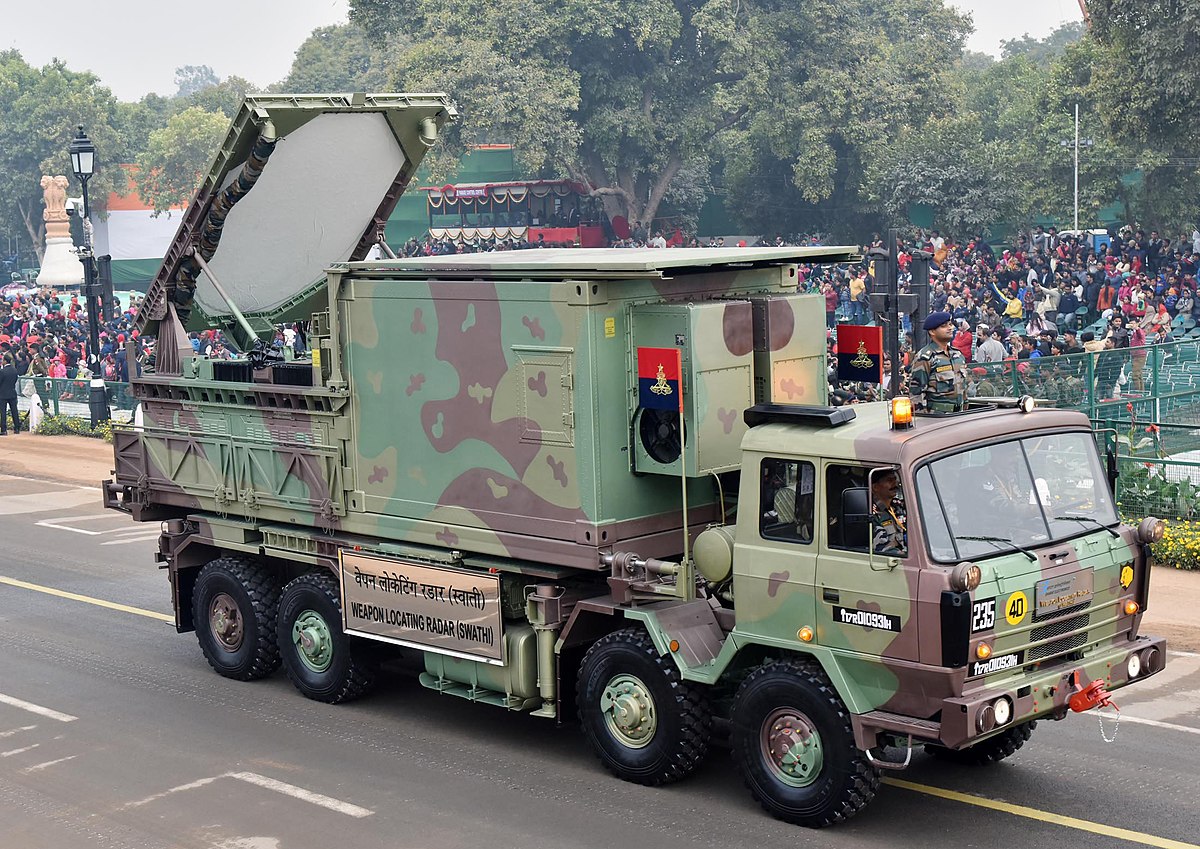About Swathi Mountains
- The Swathi Mountains WLR is an advanced electronically scanned phased array radar.
- It is specifically designed for operations in mountainous and high-altitude areas.
- It was developed by Bharat Electronics Limited (BEL) in Bengaluru.
What is a Weapon Locating Radar?
- The WLR stands as a critical asset for modern militaries, employing advanced signal processing techniques to autonomously detect and track hostile artillery, mortars, and rocket launchers.
- It even tracks friendly fire trajectories, enabling precise calculations for more accurate artillery strikes.
- The radar’s sophistication lies in its ability to detect and track small projectiles across the battlefield while factoring in environmental conditions for precise launch and impact point estimations.
- A hallmark of the WLR is its high mobility and swift deployment capabilities, allowing it to adapt to changing operational requirements efficiently.
- Its slewable platform further enhances its agility, enabling the scanning of different areas without the need for physical repositioning.
- The WLR also acts as a potent friendly force multiplier by providing critical information on enemy weapon systems.
Swathi Plains vs Swathi Mountains
- The Swathi radar comes in two versions: the Swathi Plains (WLR) and the Swathi Mountains (WLR-M).
- The Swathi Plains version is primarily designed to locate hostile guns, mortars, and rockets, and it can also track the fall of shot from friendly weapons for corrective measures on flat terrains like Plains, as the name of the version suggests.
- Swathi Mountains version:
- It is a more compact and mobile version specifically designed for operations in mountainous and high-altitude terrains.
- It is capable of detecting mortar shells and rockets and tracking projectiles.
- It classifies projectile and non-projectile targets, rejecting unwanted signals like birds, clutter, and aircraft.
- It offers trajectory estimation and launch/impact point extrapolation, automatically correcting for height to enhance accuracy.
- The radar system is equipped to store and display trajectory data and maintain communication with higher echelons for better coordination.
Q1) What is a Radar?
Radar stands for “Radio Detection and Ranging.” It is a technology used to detect and track objects, such as aircraft, ships, weather formations, and other physical phenomena. Radar works by emitting electromagnetic waves (radio waves) and then analyzing the reflections or echoes of those waves when they bounce back after hitting an object.
Source: Big Push To Defence: Indian Army Inducts Swathi Mk2 Radar For Mountain Surveillance
Last updated on December, 2025
→ Check out the latest UPSC Syllabus 2026 here.
→ Join Vajiram & Ravi’s Interview Guidance Programme for expert help to crack your final UPSC stage.
→ UPSC Mains Result 2025 is now out.
→ UPSC Notification 2026 is scheduled to be released on January 14, 2026.
→ UPSC Calendar 2026 is released on 15th May, 2025.
→ The UPSC Vacancy 2025 were released 1129, out of which 979 were for UPSC CSE and remaining 150 are for UPSC IFoS.
→ UPSC Prelims 2026 will be conducted on 24th May, 2026 & UPSC Mains 2026 will be conducted on 21st August 2026.
→ The UPSC Selection Process is of 3 stages-Prelims, Mains and Interview.
→ UPSC Result 2024 is released with latest UPSC Marksheet 2024. Check Now!
→ UPSC Prelims Result 2025 is out now for the CSE held on 25 May 2025.
→ UPSC Toppers List 2024 is released now. Shakti Dubey is UPSC AIR 1 2024 Topper.
→ UPSC Prelims Question Paper 2025 and Unofficial Prelims Answer Key 2025 are available now.
→ UPSC Mains Question Paper 2025 is out for Essay, GS 1, 2, 3 & GS 4.
→ UPSC Mains Indian Language Question Paper 2025 is now out.
→ UPSC Mains Optional Question Paper 2025 is now out.
→ Also check Best IAS Coaching in Delhi

















